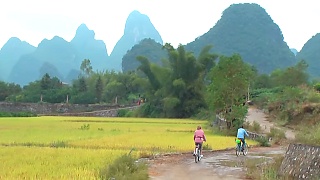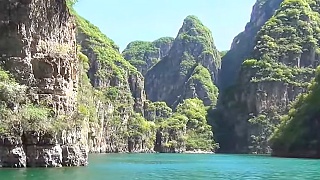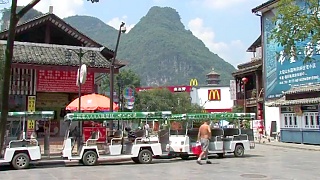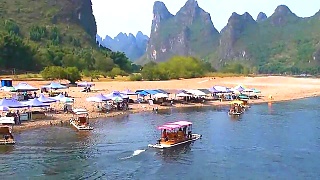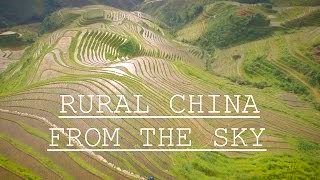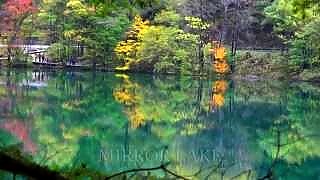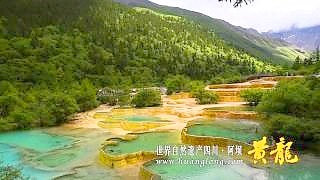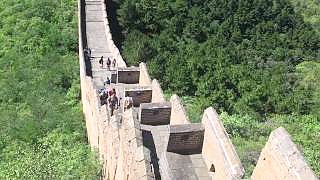With Beijing Old Liu ...
[640],shadow=true,start=,stop=Goose Spring (Equan) Visitor Guide - GuangXi
Overview
Goose Spring, also known as Equan, is a renowned scenic spot in GuangXi Province, China. Known for its crystal-clear waters, lush greenery, and serene environment, Goose Spring offers a perfect getaway for nature lovers and those seeking tranquility.
Getting There
Location: Bama Yao Autonomous County, HeChi City, GuangXi Province, China.
Public Transport:
- By Bus: There are regular buses from HeChi City to Bama Yao Autonomous County. From there, local transportation options such as taxis can take you to Goose Spring.
- By Train: The nearest major railway station is in HeChi City. From the station, you can take a bus or taxi to the scenic area.
Opening Hours
- Daily: 8:00 AM to 6:00 PM
Tickets
- Entrance Fee: ¥60
- Discounted Ticket (for children, students, and seniors): ¥30
Main Attractions
Goose Spring offers several attractions for visitors to explore:
- Goose Spring (Equan): The main feature, this spring is known for its exceptionally clear water and beautiful surroundings.
- Equan Waterfall: A picturesque waterfall located near the spring, providing a stunning backdrop for photos.
- Scenic Walking Trails: Various trails around the spring offer opportunities for leisurely walks and enjoying the natural beauty.
- Lush Forests: The area is surrounded by dense forests, home to diverse flora and fauna.
- Observation Decks: Several decks offer panoramic views of the scenic area, perfect for photography and relaxation.
Activities
Visitors can engage in a variety of activities at Goose Spring:
- Hiking: Explore the trails that wind through the scenic area and enjoy the beautiful natural environment.
- Bird Watching: The area is home to many bird species, making it ideal for bird watchers.
- Photography: Capture the stunning landscapes and serene environment.
- Relaxing by the Spring: Spend time relaxing by the clear waters of the spring and soaking in the tranquility.
- Picnicking: There are designated areas for picnics, where visitors can enjoy a meal amidst nature.
Dining and Refreshments
Several small restaurants and snack stalls are available around Goose Spring, offering local GuangXi cuisine and refreshments. It's also a good idea to bring your own snacks and water.
Visitor Tips
- Best Time to Visit: Spring and autumn are the best times to visit due to the pleasant weather and beautiful scenery. Summer can be hot, and winter can be cold.
- Wear Comfortable Shoes: The scenic area has many trails, so comfortable walking shoes are recommended.
- Stay Hydrated: Bring plenty of water, especially if you plan on hiking.
- Prepare for Weather: Bring a raincoat or umbrella during the rainy season, and dress in layers for temperature changes.
- Respect Nature: Follow park rules, stay on designated paths, and do not disturb the wildlife.
Nearby Attractions
- Baimo Cave: A fascinating karst cave with unique rock formations and underground rivers, located in Bama Yao Autonomous County.
- Baimang River: A beautiful river known for its clear waters and picturesque surroundings, ideal for boating and sightseeing.
- Longevity Village: A village famous for the longevity of its residents, offering insights into local culture and lifestyle.
Conclusion
Goose Spring (Equan) in GuangXi is a tranquil and beautiful destination that offers a mix of natural beauty, serene environment, and cultural experiences. Whether you're a nature enthusiast, hiker, or simply looking for a peaceful retreat, Goose Spring provides an unforgettable experience.

 Goose Spring, a paradise hidden deep in GuangXi province
Goose Spring, a paradise hidden deep in GuangXi province


